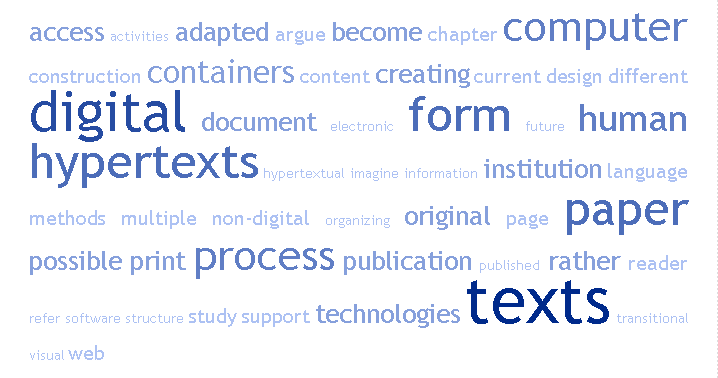Movement and Containment in Texts and Hypertexts
This is just a sample. To put it in context, visit Hypertextual Ultrastructures' home page for an abstract, the full Table of Contents, and a link to
the full text of my dissertation.
- Findings and Recommendations
- Categories: Hypertexts Are Texts
- Processes: Hypertexts Are Mediated
- Transitional Forms: Digital Texts, Non-Digital Processes
- The Spike
Transitional Forms: Digital Texts, Non-Digital Processes
If you keep an eye out, you can probably identify many transitional forms like this one.

In case it's not obvious to you why I think forms like this are so fascinating, here are a few paragraphs from my dissertation:
This text is not simply a digitized reproduction of an earlier paper form. Intelligent features have been added: most of the form is protected, with entry of personal data allowed only in designated locations; length limits are enforced for entered data, making it impossible to disrupt the form’s one-page design; where the user can express a preference, an option must be selected from a pull-down menu rather than being entered as free-form text. However, although the form is made available via the Web and contains structural features taking advantage of its nature as a digital document, it contains instructions requiring it to be handled as a paper document: “submit original and three copies.”
“Original” and “copy” are problematic concepts here, with different meanings for texts stored in paper or digital containers. For the user who obtains the form, completes it, and wishes to have it processed and approved, the digital text on the Web site is the “original,” the source from which any copies must be derived. Multiple digital copies of the original digital document could be produced; their filenames and timestamps would differ from the original but their content would not, making the enterprise of creating copies a pointless one. Because the form provides locations in which to record manuscript signatures, the instruction to “submit original and three copies” must refer only to paper derivatives of the electronic form: the “original” becomes the one sheet of paper on which the form has been printed and manuscript signatures have been added, and the “copies” are images of the signed “original” paper, xerographically reproduced on other pieces of paper. The digital starting point on the Web becomes something pre-original; the older paper form from which the digital version was adapted can be imagined as an Ur-document, an imaginary pre-pre-original which may have existed for many years in multiple revisions during its lifetime on paper before it became the source for the digital document.
This text and others like it are participants in and evidence of large-scale transitional processes, in which a digital text must be transformed into a non-digital text, moving in a direction opposite to a previous digitization process, to enable further processing by non-digital means. Situations such as this arise because, quite naturally, organizations do not digitize holistically; paper forms can be replaced by digital forms much more easily than the associated human activities can be adapted to coordinate with that change. It is as if part of an office—the front lobby, with a display rack of helpful brochures, maps, and forms—is represented digitally but the remainder of the office is unchanged: to move past the front lobby with its display rack of forms and have one of the forms actually processed within the office requires that the form make the transition away from its digital “original” into a new, paper “original” that can be manipulated in non-digital ways. Paper provides a transitional medium between digital and non-digital document management tasks; the point at which users of a digital text are directed to paper—print, copy, fold, detach, staple, mail—is the point at which digital information connects to and depends upon non-digital processing. This is also a point at which artificial intelligences are excluded from further participation in a hyper-collaboration: non-digital paper is invisible to and unreachable by software.
